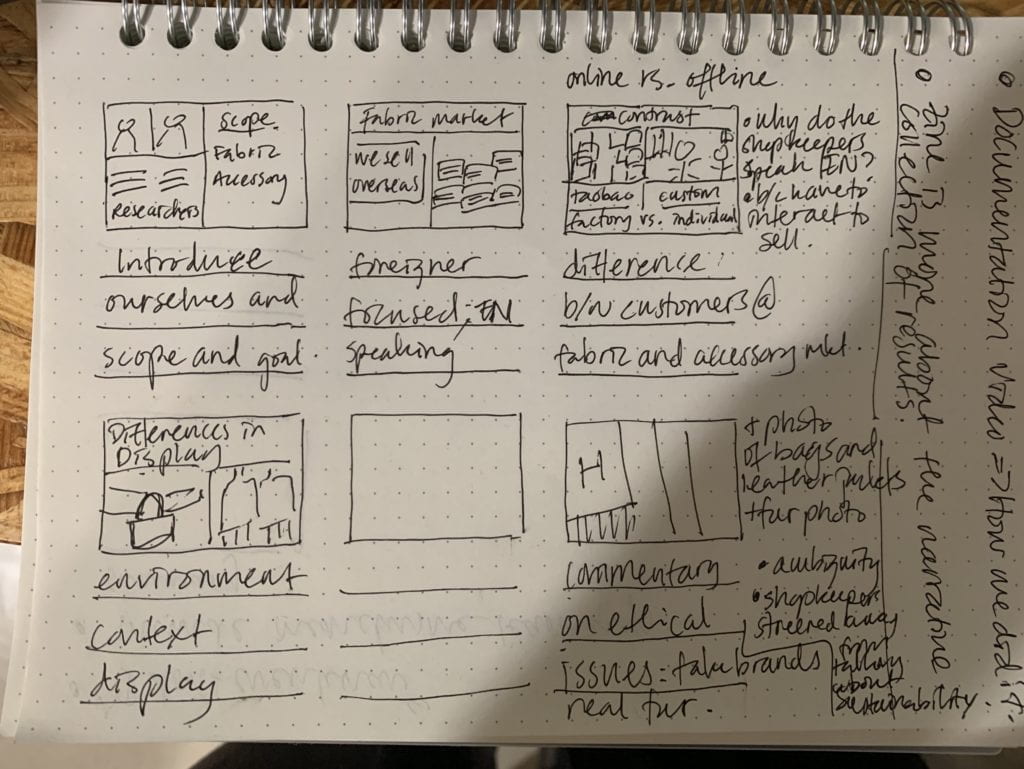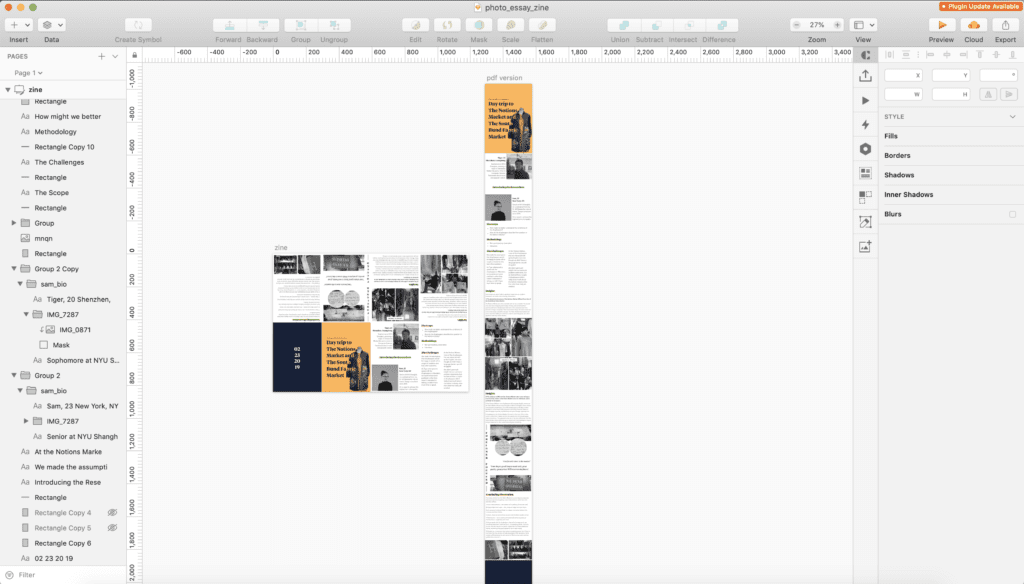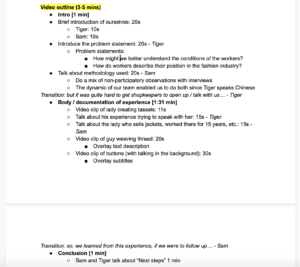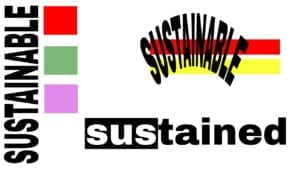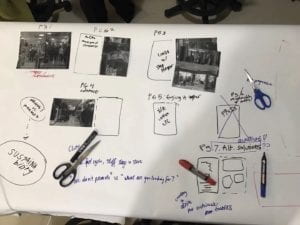Team: Ji Hwan Shin and Salomon Ruiz
Zine: zine2
Video: https://drive.google.com/file/d/1B_kmb_jXKCiJI7ygCZWd2NHCJ3nIDsL1/view?usp=sharing
Ethnographic research of the Shanghai Notions Market and the South Bund Fabric Market
For our research we focused on both consumption and the types of materials being sold at both the Notions and the South Bund Fabric Market. Before going to the markets, we prepared some questions for both the customers and the shop keepers, such as “How did you find about this market?”, “Why are you buying X material?”, “Is it for personal use?”, “In general, what kind of costumers come to your shop?”, etc.
Once we arrived to the Notions Market, we noticed there were not many people at that time, so it was a bit difficult to find customers we could interview. We started by interviewing and recording some of the shop owners. Eric used his Chinese skills in order to communicate with them as they did not speak English. Some of them agreed to participate in our research, but some of them did not want to answers our questions. Regarding the pictures, most of them agreed that we photograph their merchandise, although a policeman near the entrance told us we could not take pictures. We made about 6 interviews in this market and took many pictures. Here are some of the pictures
At the South Bund Market, we noticed there were many foreigners shopping and most of the shop keepers were trying to sell us their products or order a tailored attired. Also, most of them knew some English as this is a popular place among expats and foreign tourists. We interviewed both local and foreign customers as well as some shop keepers. The prices were a bit high but bargaining can be done to lower the price. This market was bigger and busier. Different types of fabrics are sold and used for the tailored clothes. Here are some pictures of the market
After our field trip, we had a workshop during the class in order to have an outline of our research narrative and some conclusions. We arrived to the conclusion that the notions market is more targeted to local and artists, while the South Bund fabric market focuses on foreigners and locals looking more often for a tailor-made attire, such as a suit or dress. Another thing we assume is that the first market has a business to business and business to costumers models as they outsource to other companies and also sell to regular consumers. The second market is mostly based on the business to costumer model, as there is a strong relation and consumption from direct costumers. Last, we listed the types of materials we found in each market, as you can see in the pictures below
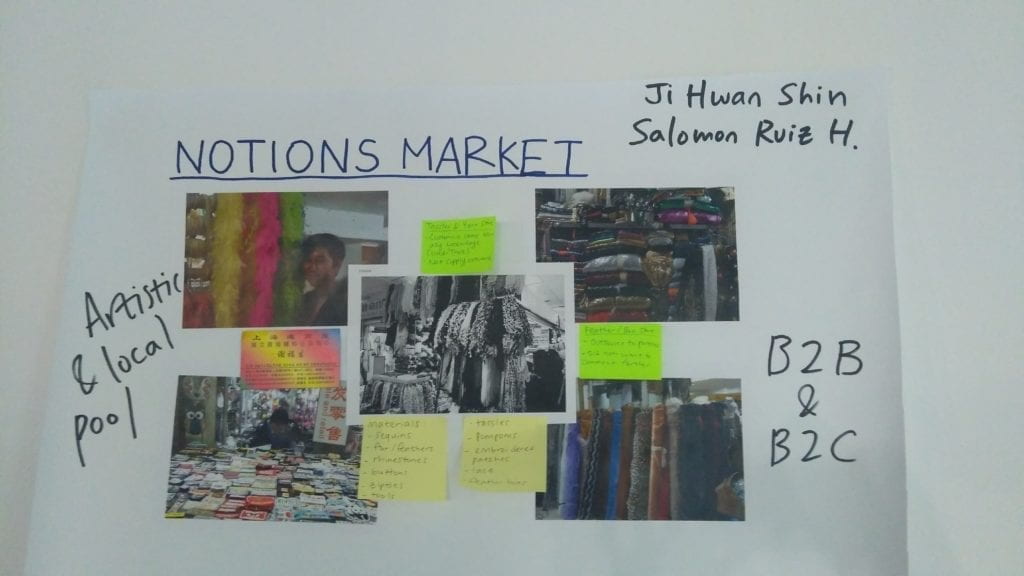
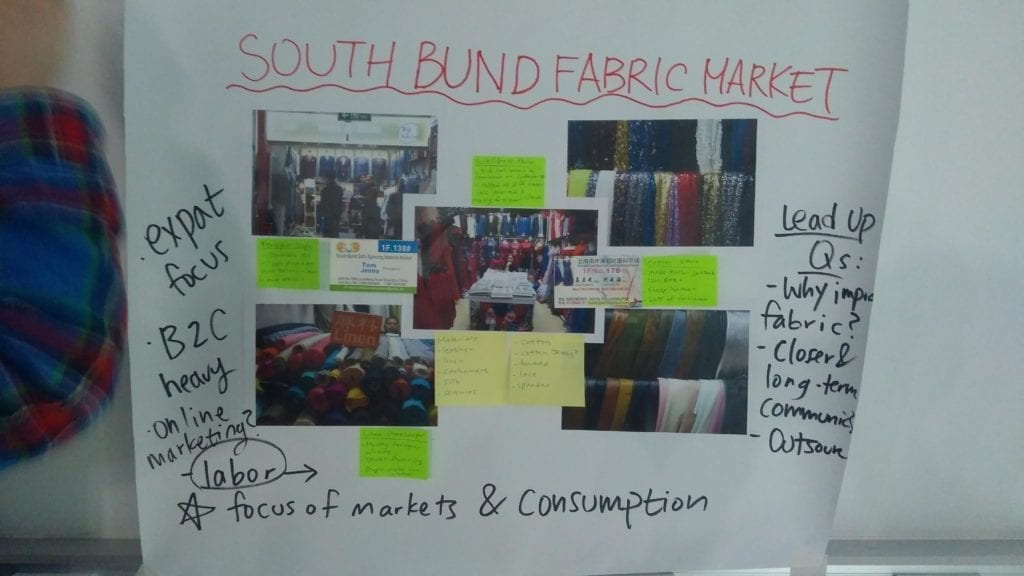
For the zine, we used Indesign. We organized the zine in two parts, one for each market. For the front cover we chose a picture of a woman working on a garment as it relates to our research topic. For each market we chose pictures showing or related to the interviews we made during the field trip and some about the materials. We added descriptions about the pictures and also summed up our conclusions about each market. We played around with the positions of the pictures to make it more interesting and less linear. At the beginning we planned to print it in size A5 but we had some issues with the printers so we ended up using A4.
Our video highlights the types of labor involved in each market and how this affects the consumption habits of consumers. We made the video using iMovie. We asked around different store vendors and customers about their experiences. We included these interviews in the video and put some subtitles for the conversations in chinese. Upon further observation, we concluded that the notions market tends to draw a more local and artistic pool of customers. Their business to business and business to customers models make the area suitable for direct purchase from both consumers and businesses. Whereas in the fabric market, foreigners are keen to shop here due to recommendations from their coworkers or sites like Trip Advisor. They believe that the quality of products and tailoring services are worth the premium pricing. There still lies the questions like why they import fabrics and whether outsourcing business to business or via the web is more common due to its heavy business to consumer model. Many of these are left unanswered because of confidentiality kept by shopkeepers and because of the short time of this research.
